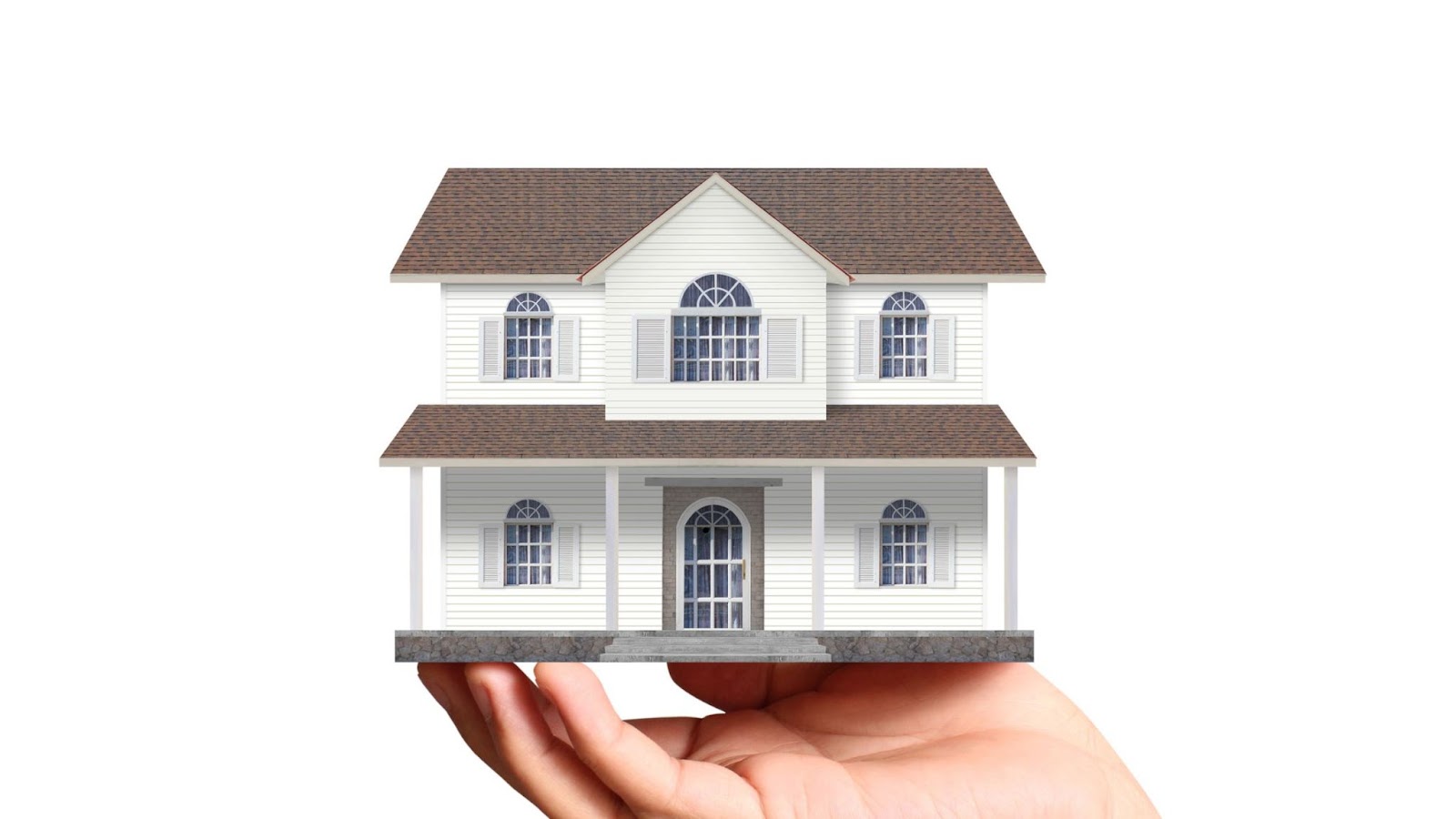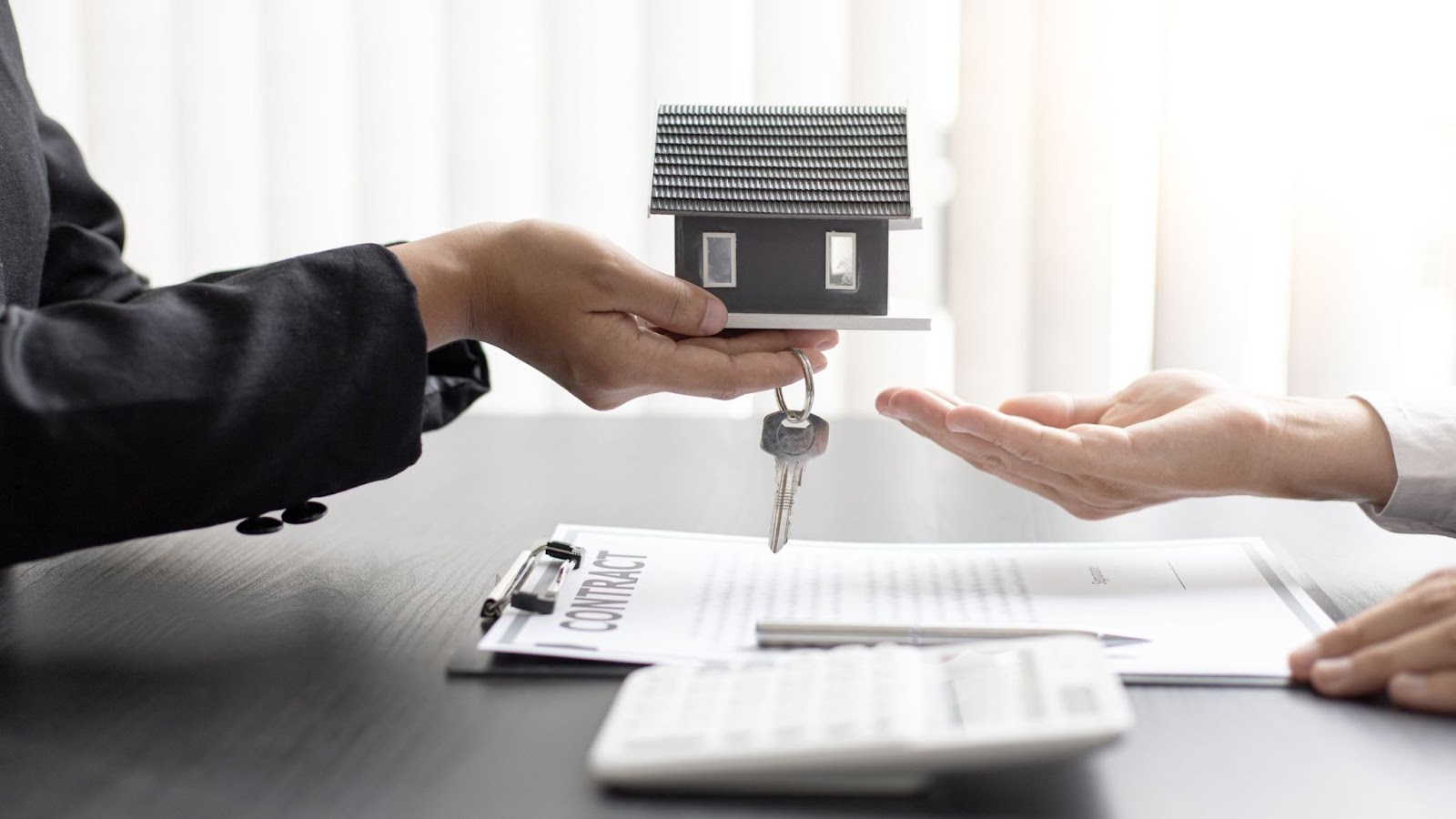 Last updated: August 19th, 2024
Last updated: August 19th, 2024
Landscape Drainage Problems And Solutions: Keeping Your Yard Healthy
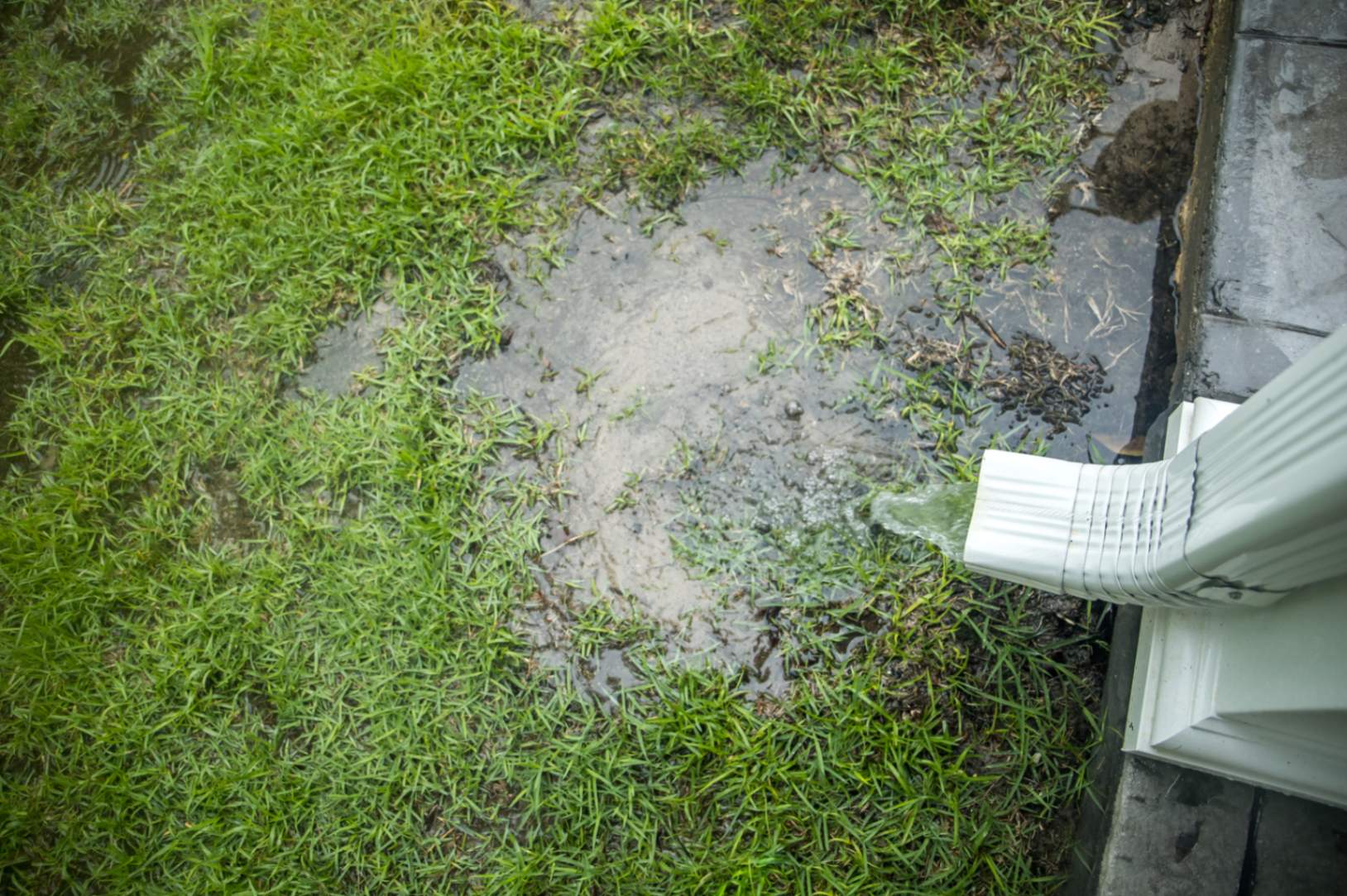
Landscape drainage is a crucial aspect of garden and yard maintenance. Proper drainage ensures that water does not accumulate in undesirable areas, which can lead to various problems such as soil erosion, plant damage, and structural issues in buildings. This guide aims to identify common landscape drainage problems and provide effective solutions.
Identifying Common Drainage Problems
Proper landscape drainage is crucial for maintaining a healthy, functional, and aesthetically pleasing outdoor environment. Identifying common drainage problems is the first step toward implementing effective solutions. Here are some common drainage issues and how to recognize them:
1. Standing Water
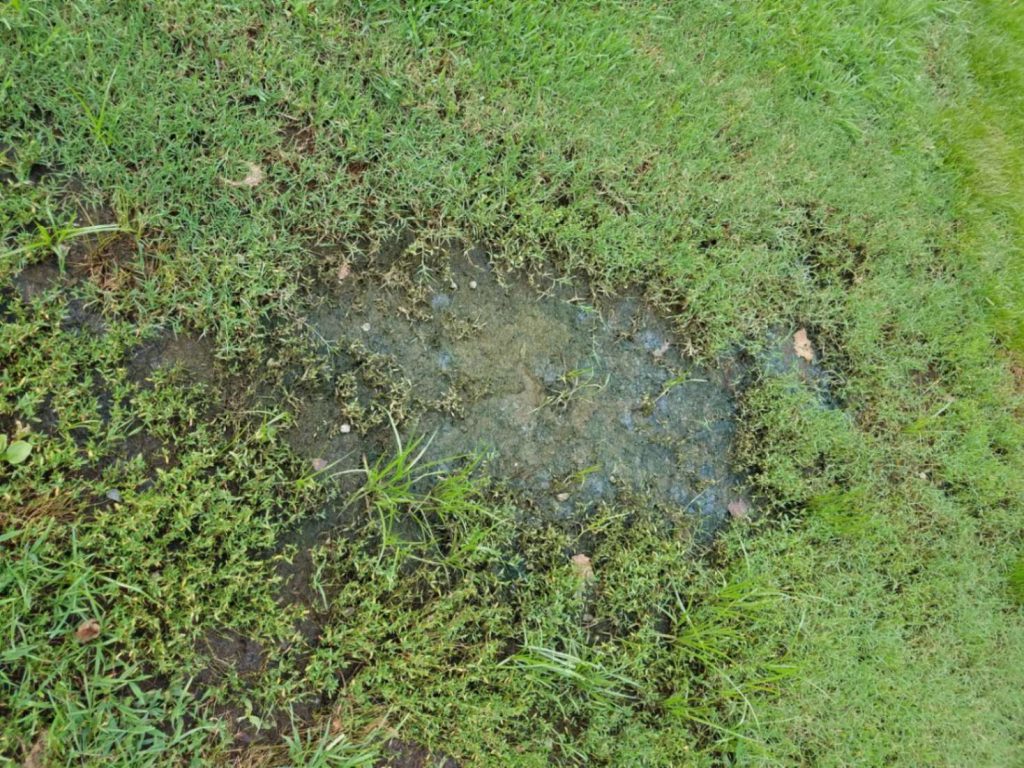
Standing water refers to puddles or areas where water collects and remains stagnant for hours or even days after rainfall. This issue is often evident in yards, gardens, or outdoor areas where water fails to drain effectively. Over time, standing water can lead to various problems, including lawn diseases, plant root rot, mosquito breeding, and an unhealthy landscape.
Signs
- Puddles in Yard: Noticeable pools of water that don’t dissipate quickly.
- Wet Spots: Persistent damp areas even during dry weather.
- Soil Saturation: Soil that remains soggy or muddy for extended periods.
- Vegetation Issues: Grass, flowers, or plants showing rot, discoloration, or disease.
Causes
- Poor Soil Permeability: Soils with high clay content have tiny particles that compact tightly, preventing water from passing through easily.
- Low Spots: Natural or artificial depressions in the landscape where water collects.
- Soil: This soil is compressed by foot traffic, machinery, or heavy rains, reducing its ability to absorb water.
- Inadequate Grading: When the land is not sloped correctly, it fails to direct water away from the property, leading to pooling.
2. Erosion
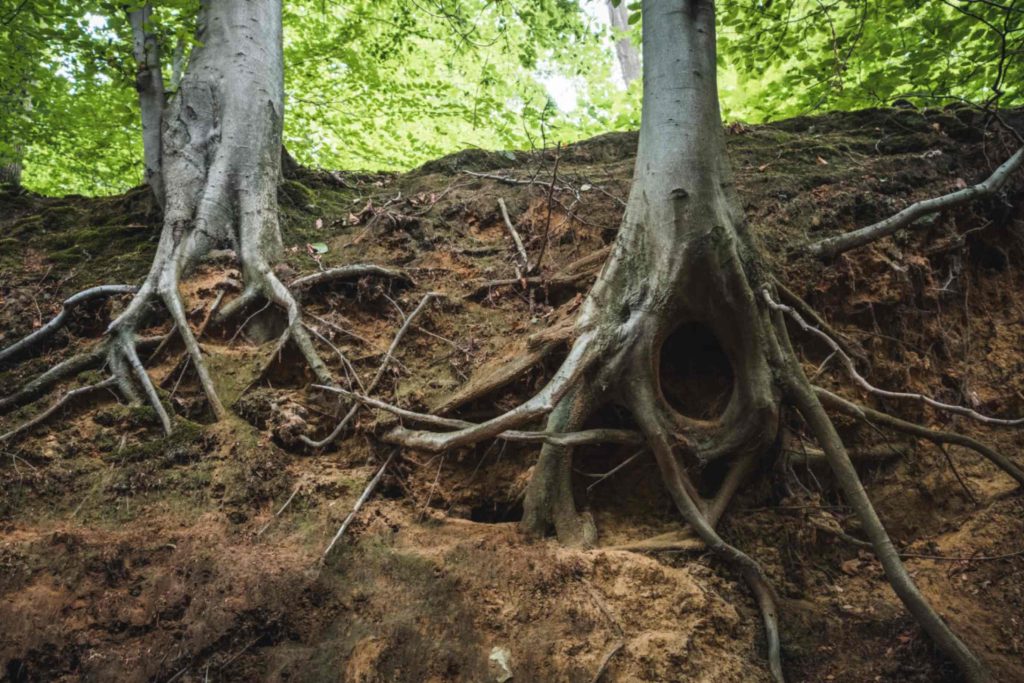
Erosion involves the wearing away of the soil due to water movement. This process can result in significant landscape changes, such as gullies and loss of fertile topsoil. Erosion is particularly problematic on slopes and embankments, where water flow can carry soil particles downhill, leading to landscape instability and potential damage to structures.
Signs
- Visible Channels: Noticeable trenches or channels in the soil created by flowing water.
- Exposed Roots: Plant roots that become visible as the surrounding soil is washed away.
- Sediment Accumulation: Piles of soil or sediment in lower areas where eroded material settles.
- Topsoil Loss: Reduction in the fertile layer of soil, leading to poor plant growth.
Causes
- Heavy Rainfall: Intense or prolonged rain events that cause significant water movement across the landscape.
- Steep Slopes: Areas with sharp inclines where gravity enhances water speed and erosive force.
- Lack Of Vegetation: Bare soil is more prone to erosion as no roots hold the soil in place.
- Poor Drainage Planning: Inadequate systems are needed to manage and direct water flow, exacerbating erosion issues.
3. Soggy Lawns
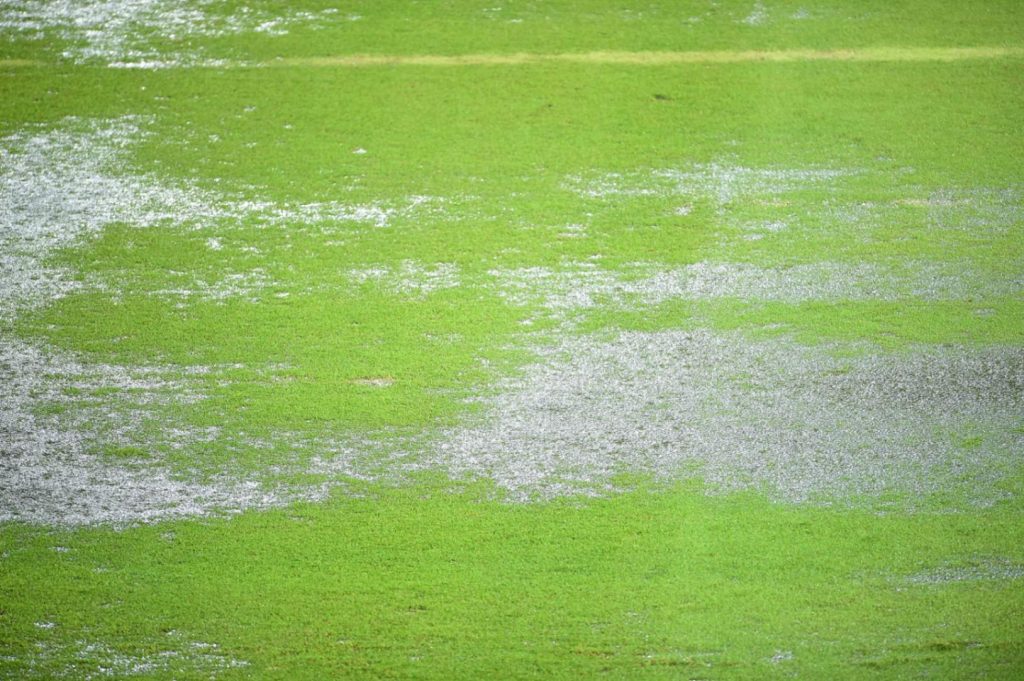
Soggy lawns are areas in a yard that remain excessively wet, making the ground soft and mushy. This condition not only hampers the usability of the lawn but also affects the health of grass and plants, promoting diseases and pests. Soggy lawns can be an indication of deeper drainage issues that need addressing.
Signs
- Waterlogged Grass: Grass that appears saturated and discolored.
- Soft Ground: Soil that feels squishy and unstable underfoot.
- Moss and Algae: Growth of moss or algae in areas where the grass cannot thrive due to excess moisture.
- Poor Plant Health: Yellowing, stunted, or dying plants due to root suffocation.
Causes
- Overwatering: Excessive irrigation that surpasses the soil’s absorption capacity.
- Poor Soil Drainage: Soil with poor structure is often heavy in clay and holds onto water.
- Low-Lying Areas: Portions of the lawn that naturally collect and retain water due to their elevation.
- Water Runoff: Ineffective runoff management that directs excess water onto the lawn.
4. Foundation Damage
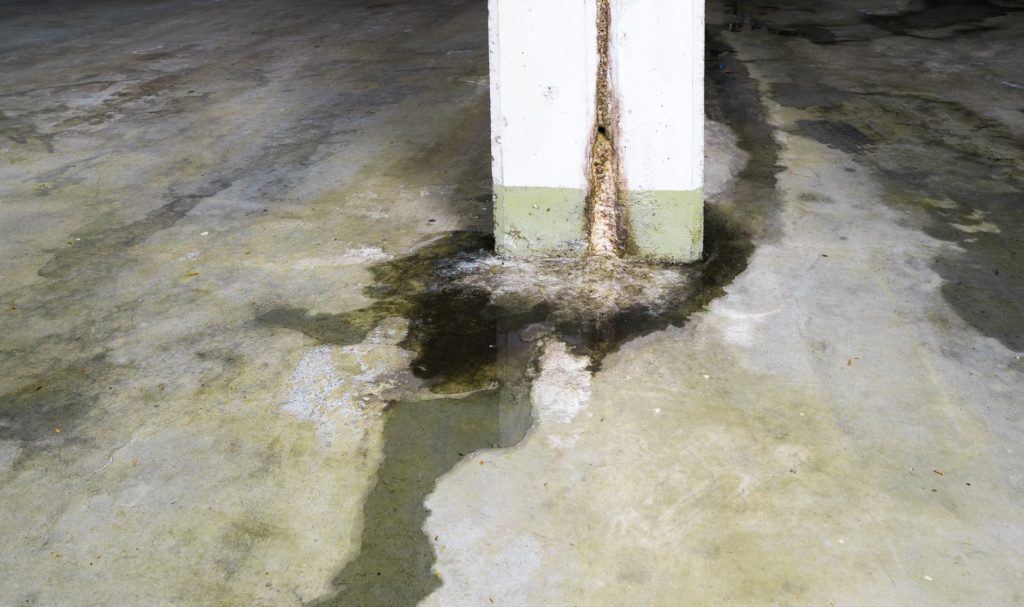
Foundation damage occurs when water accumulates around a building’s base, leading to structural issues. These can manifest as cracks in the foundation, water infiltration into basements, and overall weakening of the building’s structural integrity. Persistent foundation damage can be costly to repair and may pose serious risks to the structure’s safety.
Signs
- Cracks in Foundation: Visible fissures in the foundation walls or floor.
- Damp Basements: Moisture, water stains, or mold in basements or crawl spaces.
- Foundation Shifting: Noticeable movement or tilting of the building.
- Water Stains: Discoloration or staining on foundation walls indicating past water exposure.
Causes
- Poor Grading: Land sloping towards the foundation instead of away from it.
- Inadequate Drainage Systems: Insufficient or clogged drainage systems, such as French or perimeter drains.
- Clogged Gutters and Downspouts: Blockages that prevent proper water diversion, causing overflow near the foundation.
- High Water Table: Natural groundwater levels that rise and infiltrate the foundation.
5. Waterlogged Plant Beds
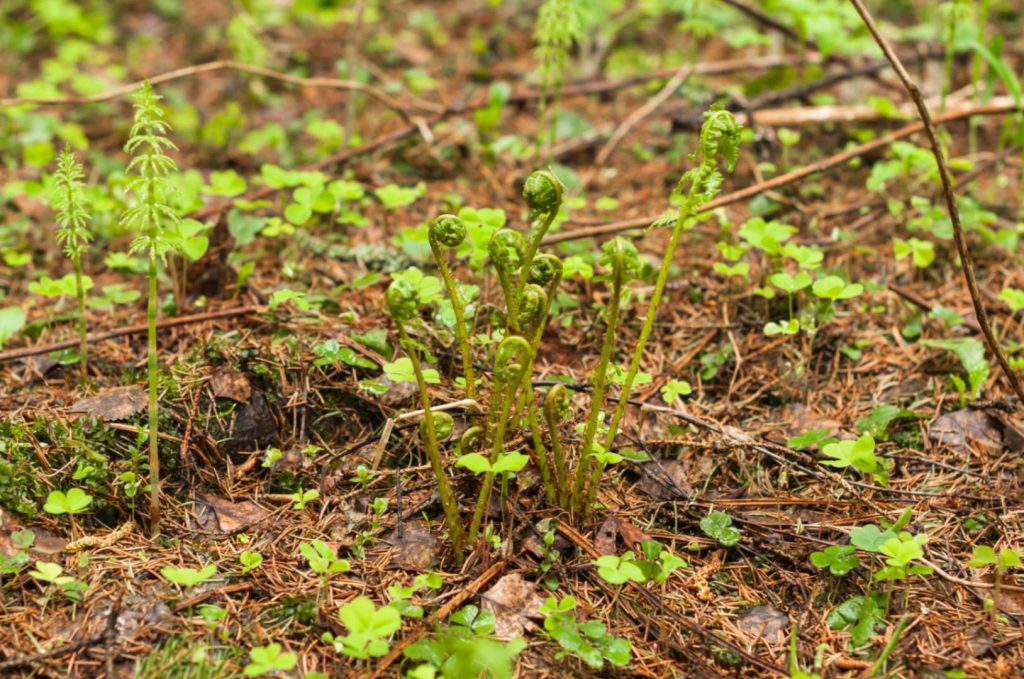
Waterlogged plant beds are areas where plants are subjected to excessive moisture, leading to unhealthy conditions. This can cause root rot, fungal infections, and poor plant performance. Maintaining proper moisture levels in plant beds is essential for healthy plant growth and disease prevention.
Signs
- Root Rot: Roots that appear black, mushy, and decayed.
- Yellowing Leaves: Leaves that turn yellow and wilt due to poor root function.
- Stunted Growth: Plants that do not grow as expected or produce fewer flowers and fruits.
- Persistently Wet Soil: Soil that remains damp or soggy long after watering.
Causes
- Poor Soil Drainage: Soil that retains water due to its composition, such as heavy clay.
- Overwatering: Providing more water than plants need, saturating the soil.
- Low Areas in Beds: Depressions within plant beds that collect water.
- Inadequate Drainage Solutions: There is a lack of systems to properly divert excess water away from plant beds.
Common Causes of Landscape Drainage Problems
Understanding the root causes of landscape drainage issues is essential for effective solutions.
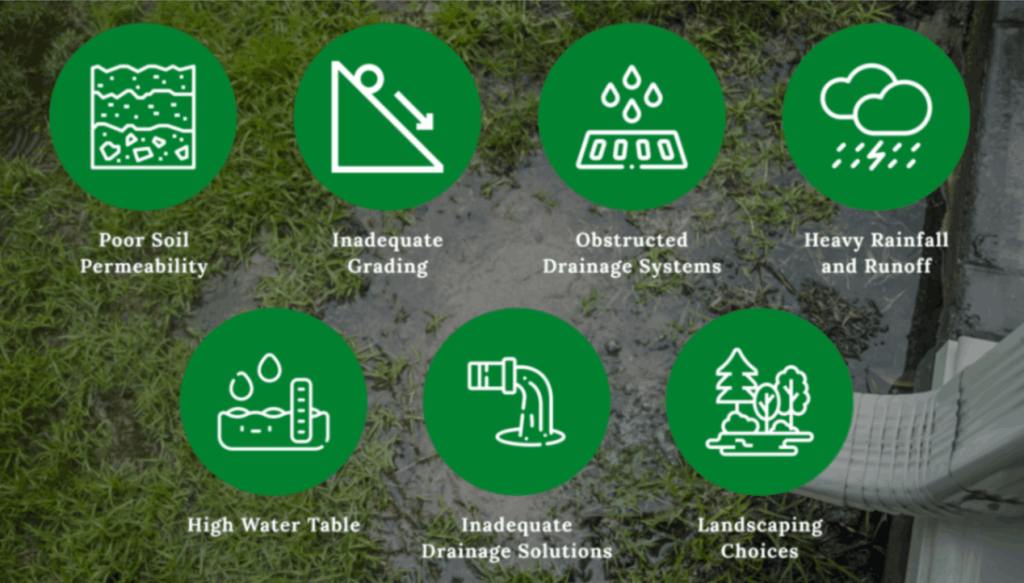
Here are some common causes that can lead to water accumulation and poor drainage in your yard.
1. Poor Soil Permeability
Soil permeability refers to the soil’s ability to allow water to pass through it. Poor soil permeability means that water is not easily absorbed, leading to surface water accumulation and poor drainage.
Causes
- Soil Composition: Soils with high clay content have tiny particles that compact tightly, restricting water movement.
- Soil Compaction: Compacted soil from foot traffic, heavy machinery, or natural settling reduces pore space, limiting water infiltration.
- Organic Matter Deficiency: The lack of organic matter in soil decreases its ability to retain and drain water efficiently.
2. Inadequate Grading
Grading involves shaping the land to control water flow. Inadequate grading prevents water from structures and desired areas, leading to accumulation and drainage issues.
Causes
- Improper Sloping: Land that slopes towards buildings or creates low spots where water collects.
- Natural Topography: Existing landscape features that prevent proper water flow.
- Construction Issues: Changes in land elevation during construction that were not adequately planned for drainage.
3. Obstructed Drainage Systems
Debris can obstruct drainage systems such as gutters, downspouts, French drains, and surface drains, causing water to back up and creating drainage problems.
Causes
- Debris Buildup: Leaves, dirt, and other debris blocking gutters and downspouts.
- Sediment Accumulation: Sediment buildup in French drains or surface drains.
- Improper Maintenance: Lack of regular cleaning and inspection of drainage systems.
4. Heavy Rainfall and Runoff
Excessive rainfall and water runoff can overwhelm drainage systems, leading to flooding and erosion.
Causes
- Storm Events: Intense or prolonged rainfall that exceeds the drainage capacity.
- Impermeable Surfaces: Large areas of concrete, asphalt, or other impervious materials that increase runoff.
- Slope Orientation: Landscapes with steep slopes that direct large volumes of water quickly.
5. High Water Table
A high water table means that groundwater is close to the surface, which can cause soil saturation and drainage problems, especially during periods of heavy rain.
Causes
- Geographical Location: Naturally high water tables in certain areas.
- Seasonal Changes: Rising groundwater levels during wet seasons.
- Construction Near Water Bodies: Proximity to rivers, lakes, or wetlands.
6. Inadequate Drainage Solutions
Inadequate or improperly installed drainage solutions fail to manage water effectively, leading to persistent drainage issues.
Causes
- Poor Design: Drainage systems not designed to handle the volume of water.
- Incorrect Installation: Drains, pipes, or other components not installed correctly.
- Lack of Drainage Features: There are no necessary drainage features, such as French drains, swales, or dry wells.
7. Landscaping Choices
Certain landscaping choices can contribute to drainage problems by preventing proper water flow or increasing water retention.
Causes
- Dense Planting: Dense vegetation that traps water and reduces infiltration.
- Hardscaping: Excessive use of impervious surfaces like patios and driveways.
- Plant Selection: Choosing plants that require less water can improve drainage; however, overwatering these plants can create problems.
Solutions For Landscape Drainage Problems
Addressing landscape drainage problems requires a combination of corrective measures and preventative strategies.

Here are some practical solutions to help manage and resolve common drainage issues in your yard.
1. Soil Improvement
There is a need to improve soil structure to enhance permeability and water retention.
Solutions
- Aeration: Aerate compacted soil to improve its ability to absorb water.
- Organic Matter: Incorporate compost or other organic matter to enhance soil structure and drainage.
- Soil Amendments: Use soil amendments like gypsum to improve soil permeability, especially in clay soils.
2. Proper Grading
Ensuring the land is appropriately graded to direct water away from buildings and prevent pooling.
Solutions
- Regrading: Reshape the land to create a gentle slope away from structures.
- Swales: Create shallow ditches or swales to channel water away from problem areas.
- Retaining Walls: Use retaining walls to effectively manage slopes and direct water flow.
3. Effective Drainage Systems
There is a need to install and maintain drainage systems to manage water flow and prevent accumulation.
Solutions
- French Drains: Install French drains to collect and divert water away from critical areas.
- Surface Drains: Surface drains capture and redirect water from low spots.
- Gutters and Downspouts: Ensure gutters and downspouts are clear and direct water away from foundations.
- Dry Wells: Implement dry wells to collect and disperse excess water underground.
4. Water Management Techniques
Implementing techniques to manage and reduce water runoff.
Solutions
- Rain Gardens: Create rain gardens to capture and absorb runoff water.
- Permeable Paving: Use permeable paving materials to allow water to infiltrate the ground.
- Rain Barrels: Install rain barrels to collect and store rainwater for later use.
Maintenance Tips Of Landscape Drainage
Regular maintenance is essential to ensure the effectiveness of your landscape drainage systems and prevent issues such as clogs, blockages, and erosion. Here are some maintenance tips to keep your drainage system functioning optimally:
- Regular Inspection: Perform routine inspections of your drainage systems, including gutters, downspouts, French drains, and surface drains, to check for any signs of damage or blockages.
- Seasonal Cleaning: Clean gutters and downspouts at least twice a year, preferably in spring and fall, to remove leaves, debris, and sediment buildup that can obstruct water flow.
- Monitor Soil Conditions: Monitor soil moisture levels in your yard and adjust your watering practices accordingly to prevent overwatering, which can contribute to drainage issues.
- Vegetation Management: Maintain healthy vegetation in your yard. Plants help stabilize soil and reduce erosion. Remove any overgrown vegetation that may obstruct drainage pathways.
- Repair Damage Promptly: Address any signs of erosion, foundation damage, or drainage problems as soon as they arise to prevent further damage and costly repairs.
- Clear Drainage Pathways: Ensure that drainage pathways, such as swales and ditches, remain clear of vegetation, debris, and sediment to allow water to flow freely.
- Check Grading: Periodically inspect the grading of your yard to ensure that the land slopes away from buildings and toward drainage outlets, preventing water from pooling near structures.
- Inspect Sump Pump: If a sump pump is installed, check it regularly to ensure it is functioning properly and clear any debris from the pump and discharge pipe.
- Consider Professional Inspection: If you are unsure about the condition of your drainage systems or notice persistent drainage issues, consider hiring a professional to conduct a thorough inspection and provide recommendations for improvement.
By following these maintenance tips, you can help ensure that your landscape drainage systems effectively manage water flow and prevent drainage problems in your yard.
Home Warranty And Landscape Drainage
Home warranty companies typically don’t cover landscape drainage issues; they’re considered part of home maintenance. However, these warranties can still offer valuable coverage for major systems and appliances like HVAC, electrical, and plumbing issues.
To address drainage concerns, homeowners may need to implement solutions such as French drains or proper grading. While not covered by warranties, proactive measures can prevent potential damage to the property.
Conclusion
Homeowners can prevent water accumulation, erosion, and other related issues by identifying common drainage problems, implementing effective solutions, and performing regular maintenance. While home warranties offer coverage for major systems and appliances, proactive measures are necessary to manage landscape drainage effectively and protect the property in the long term.
related articles
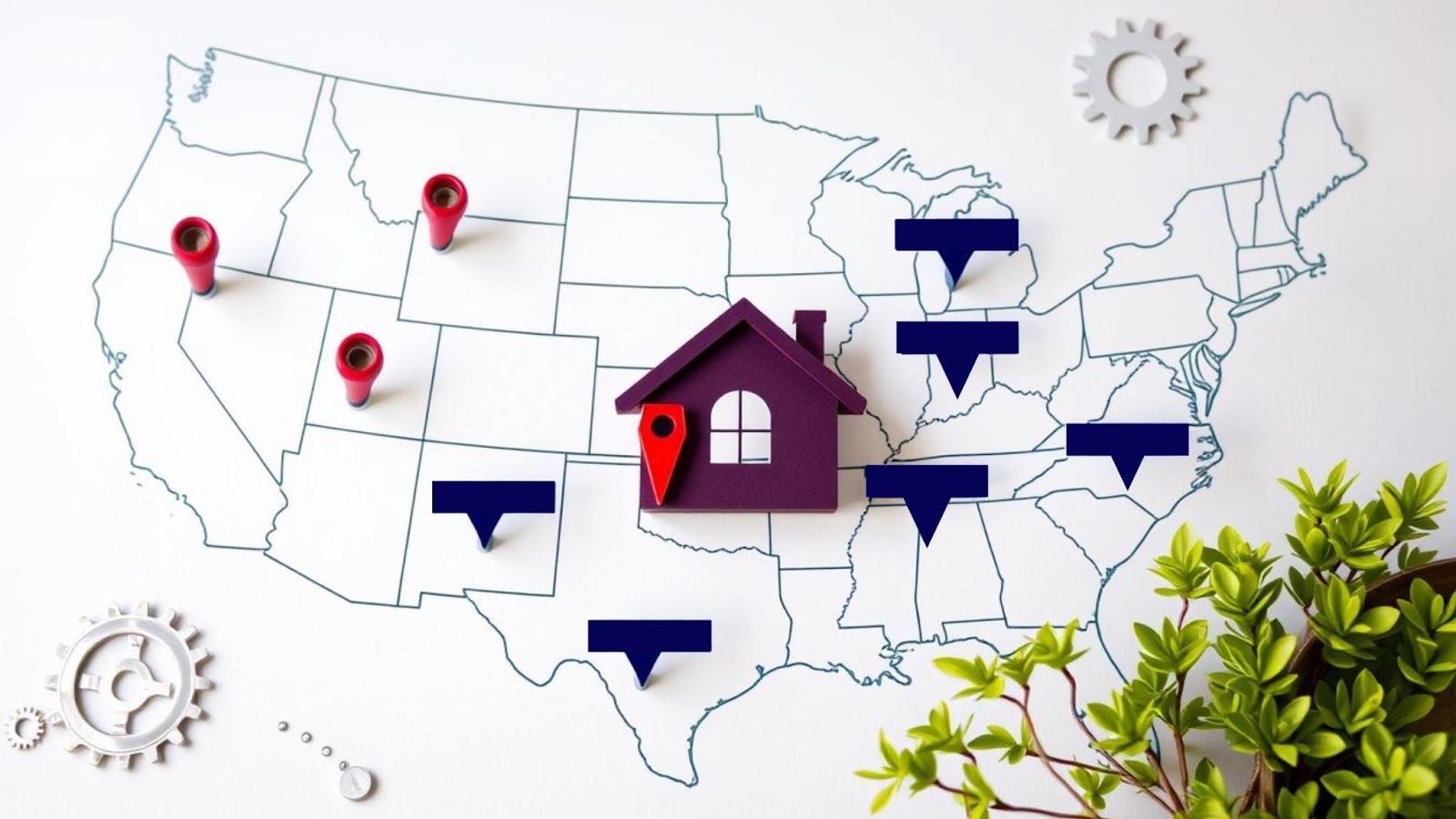 Discover First American Home Warranty Locations and What You Need to Know About Their Cover.
Discover First American Home Warranty Locations and What You Need to Know About Their Cover.
 Reviews of Home Warranty Companies Show You How to Determine If Your Home Is Covered
Reviews of Home Warranty Companies Show You How to Determine If Your Home Is Covered









